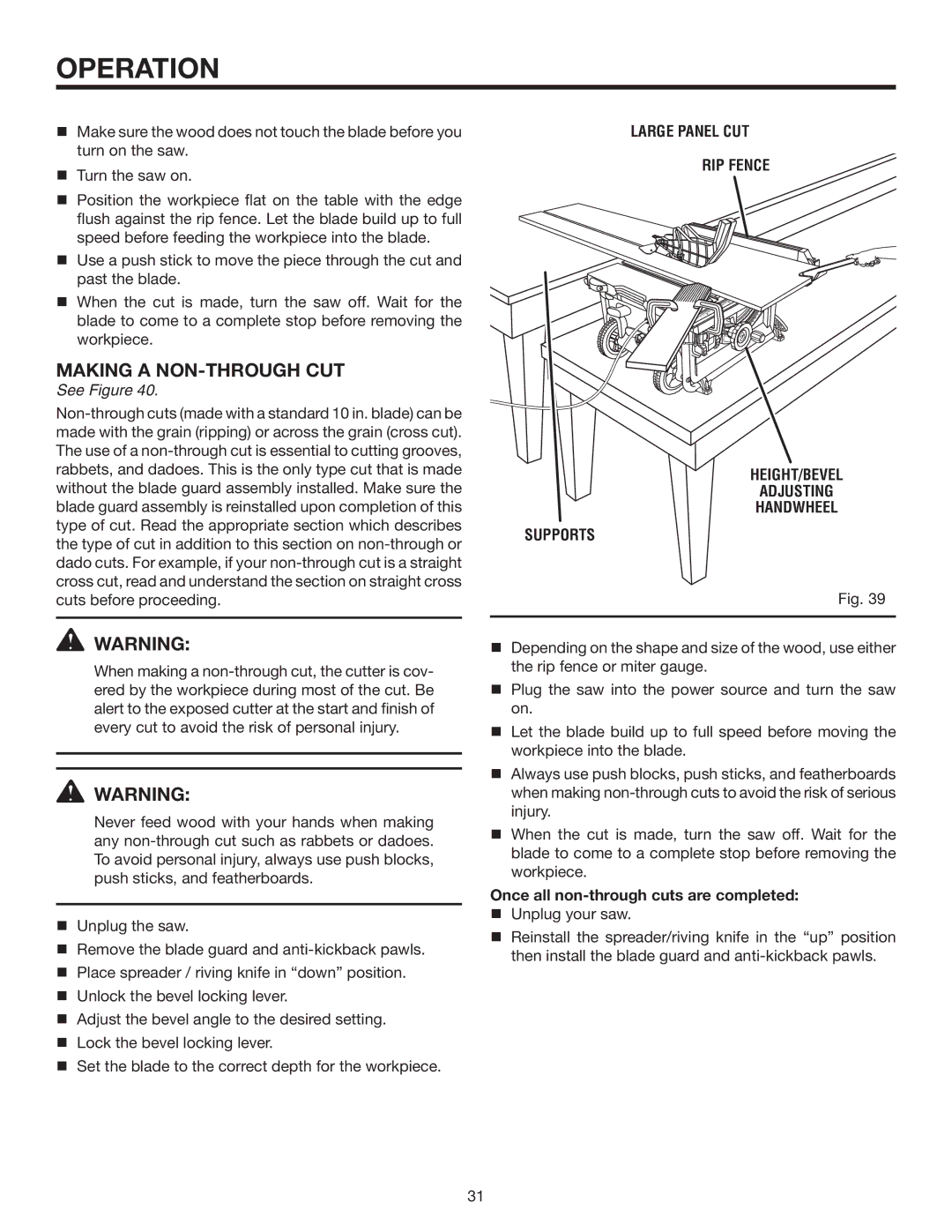
OPERATION
Make sure the wood does not touch the blade before you turn on the saw.
Turn the saw on.
Position the workpiece flat on the table with the edge flush against the rip fence. Let the blade build up to full speed before feeding the workpiece into the blade.
Use a push stick to move the piece through the cut and past the blade.
When the cut is made, turn the saw off. Wait for the blade to come to a complete stop before removing the workpiece.
making a NON-THROUGH cut
See Figure 40.
![]() WARNING:
WARNING:
When making a
![]() WARNING:
WARNING:
Never feed wood with your hands when making any
Unplug the saw.
Remove the blade guard and
Place spreader / riving knife in “down” position.
Unlock the bevel locking lever.
Adjust the bevel angle to the desired setting.
Lock the bevel locking lever.
Set the blade to the correct depth for the workpiece.
LARGE PANEL CUT
RIP FENCE
height/bevel
ADJUSTING
HANDWHEEL
SUPPORTS
Fig. 39
Depending on the shape and size of the wood, use either the rip fence or miter gauge.
Plug the saw into the power source and turn the saw on.
Let the blade build up to full speed before moving the workpiece into the blade.
Always use push blocks, push sticks, and featherboards when making
When the cut is made, turn the saw off. Wait for the blade to come to a complete stop before removing the workpiece.
Once all non-through cuts are completed:
Unplug your saw.
Reinstall the spreader/riving knife in the “up” position then install the blade guard and
31
